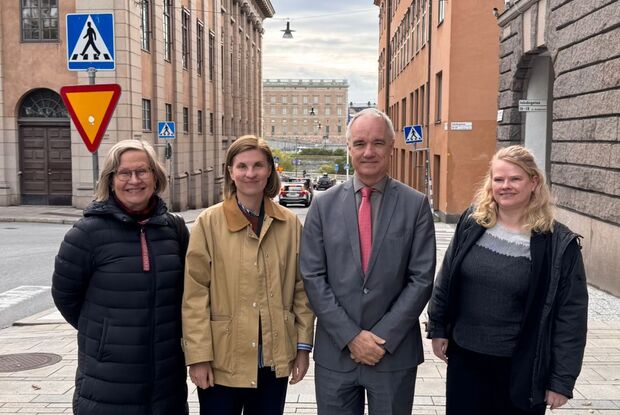Bringing people and neighbors together
The Barents region spans a large geographical range of exceptional natural diversity: from tundra and forests to rocky shores, deep lakes and high summits. It has also an exciting mix of larger urban areas in combination with many smaller places. At the same time, this region shares so many common features and challenges. Bringing people and neighbors together has been one of the most important ambitions of the Barents cooperation ever since it was established in the 1990s.
I have many good memories of this collaboration since I became involved in 2009. It is the meetings in different places and the interesting conversations with friendly and competent people, often outside of these meetings, that have made the strongest impression for me. It is a privilege to be a part of it. I often tell colleagues in the ministry that my best day at work was when I got to stand on the bridge on an icebreaker in the Gulf of Bothnia on a sunny winter day outside Luleå. For me, who does not actually live in the Barents region, it's been incredibly interesting to experience these diverse people and places.
I sincerely hope it is not that long before we can visit each other again. Unfortunately, we must wait for fewer infections and for the situation to stabilize. Roll out the vaccine, take it and stay healthy! Only then the borders will open again, along with the possibilities for travel and in-person meetings. We have managed to keep the cooperation going for a year and a half from our home offices despite these current challenging conditions. But this is not sustainable in the long term.
The quest for a true border free Barents region
I think people-to-people collaboration is one of the best and most important things. That children and young people can experience a united region, and that sports and organizations can cross borders, is invaluable in developing friendship and common understanding in a region with so many shared similarities. In terms of transport cooperation, the first version of the Joint Barents Transport Plan (JBTP) in 2013 should in particular be highlighted. This was a joint effort that was done in a short period of time that then established a new and better basis for the cooperation. Otherwise, I know that the various working groups have done a lot of useful and good work together, not least the Action Plan on Climate Change under revision right now.
The Barents cooperation is carried out jointly at the regional and national level. I think it is fruitful that these two levels of governance collaborate in the development of our regional transport system alongside the support of experts. This transport cooperation can make a difference in the Barents region by developing shared understanding of the needs for infrastructure and communicating this to the respective capitals. The current pandemic is a setback, but when the conditions allow it, the people-to-people cooperation hopefully will flourish again. The quest for a true border free Barents region will continue.
Decarbonizing the transport sector
Established in 1998 in aim of sustainable and efficient connectivity in the Barents region, the Steering Committee for the Barents Euro-Arctic Transport Area (BEATA) develops cooperation between different countries and levels of governance on the recommendations of the Joint Barents Transport Plan. The outgoing Norwegian Chairmanship (2019-2021) has been particularly keen to improve the current conditions for truck drivers on border crossing roads. Better conditions are important for the welfare and safety of drivers of heavy goods vehicles. To this end, BEATA has established an Expert Working Group that has evaluated the need for secure, clean, and efficient 24-hour rest areas and proposed suitable locations across the Barents region in a report published in March 2021. A rested driver is a safe driver! This report raises new attention to this important issue and will hopefully lead to its higher priority.
The Barents region is improving its transport sector to become carbon neutral step by step. Initial actions like the electrification of private cars, local buses, and other short-range transport paves the way for more challenging future undertakings. While we are dependent on technological innovation, we will also need to take tough decisions to reach global carbon neutrality. I am hopeful that by 2030 we have begun to implement zero and low carbon vessels and vehicles in shipping, aviation, and long-distance road transport in an industrial scale. Decarbonization of the transport sector will also be a central topic of the upcoming Finnish Presidency starting this autumn.









